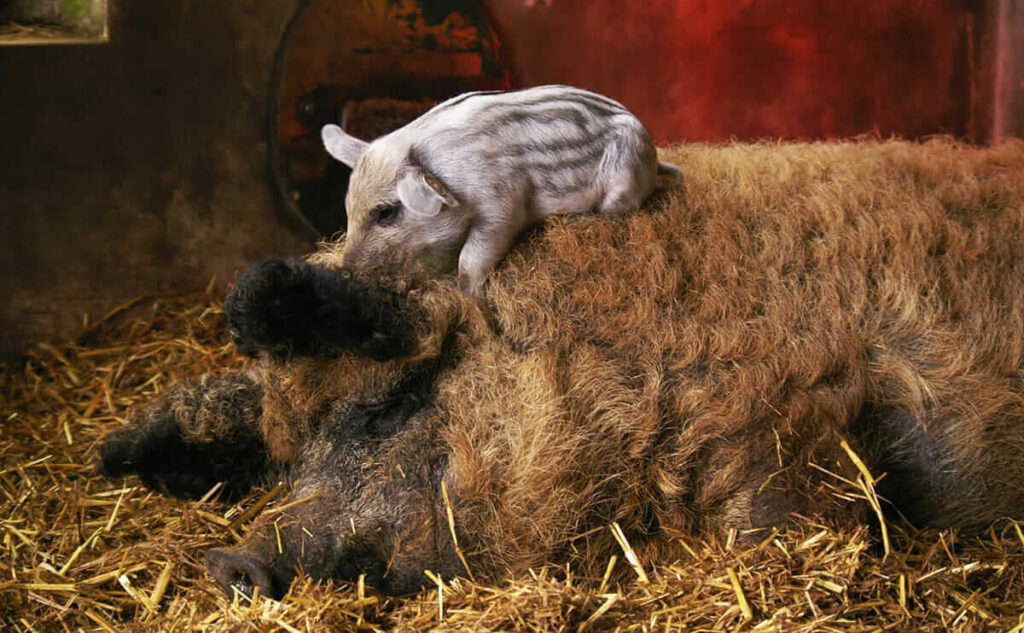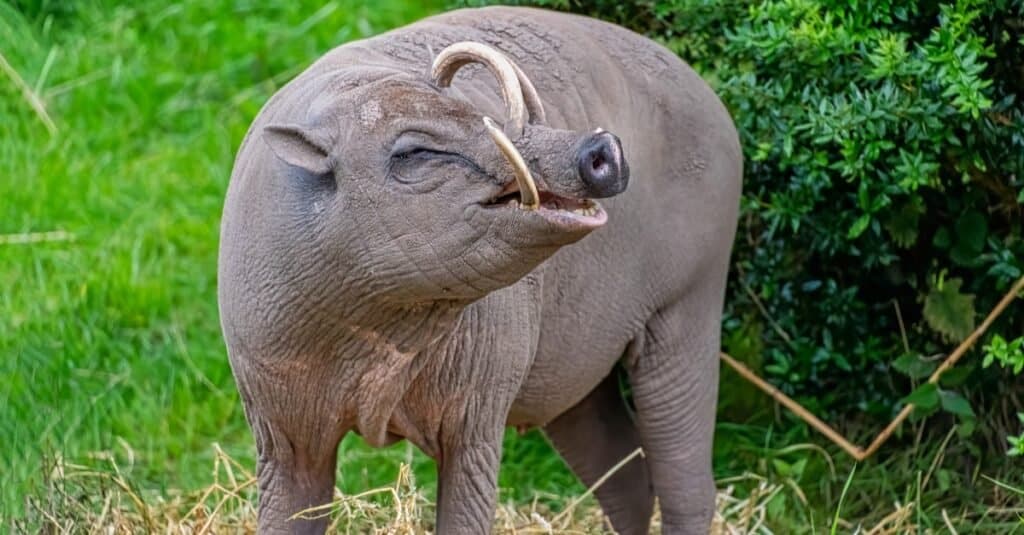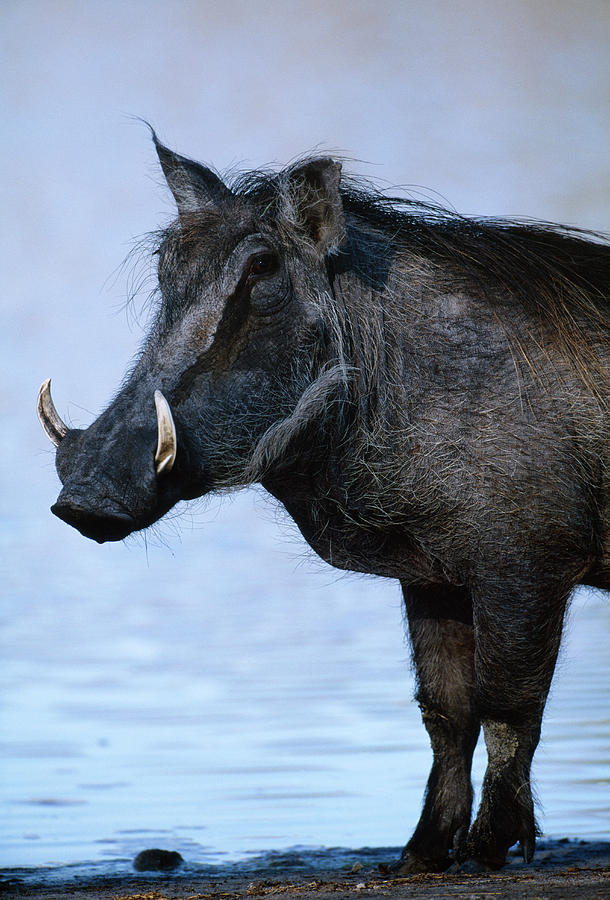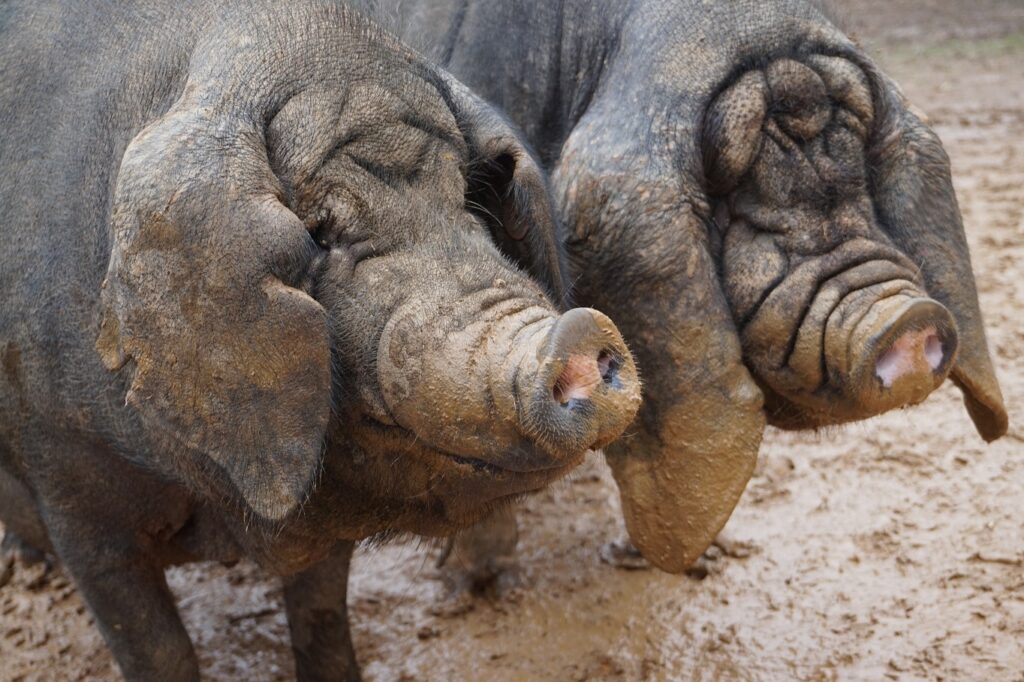Here are five of the strangest and most unique pigs from around the world—ranging from naturally bizarre to human-bred curiosities:
Mangalitsa (or Mangalica) Pig
📍 Origin: Hungary
🧬 Strangeness: It looks like a sheep.

Its unique look and premium lard have made it a delicacy pig in modern gastronomy.
The Mangalitsa is famously called the “sheep pig” because of its thick, curly coat of wool-like hair.
It was bred in the 19th century for its high-fat, marbled meat, similar to Wagyu beef.
2. Babirusa (a.k.a. “Deer Pig”)
📍 Origin: Indonesia (Sulawesi and surrounding islands)
🧬 Strangeness: Wild pig with upward-curving tusks that can pierce its own skull.

- Babirusas are wild pigs with dramatically curled tusks—in males, the upper canines grow upward through the skin of the snout, curling toward the eyes.
- If they’re not worn down or broken, these tusks can grow back into the skull—potentially fatal.
- They also have a bizarre, nearly hairless body and long legs, making them look part deer, part boar.
3. Warthog
📍 Origin: Sub-Saharan Africa
🧬 Strangeness: Built like a tank, face like a villain.

- Warthogs have massive warts (actually protective bumps) on their faces, paired with impressive tusks and a mane of bristles.
- Despite their fearsome look, they often flee danger with a comical run—tail straight up like a flagpole.
4. Kunekune Pig
📍 Origin: New Zealand (of Polynesian and Asian ancestry)
🧬 Strangeness: Small, hairy, and sports “tassels” under its chin.

- Kunekunes are short-legged, hairy pigs with a friendly demeanor.
- Their strangest feature? “Piri piri”—two dangling wattles beneath the chin that serve no known purpose.
- They’re often kept as pets due to their small size and docile nature.
5. Ossabaw Island Hog
📍 Origin: Ossabaw Island, Georgia, USA
🧬 Strangeness: Wild pig genetically adapted to famine.

- Descended from Spanish pigs left in the 1500s, they evolved in isolation and developed a “thrifty gene”—storing fat efficiently due to feast-or-famine conditions.
- As a result, they’re extremely fatty and can develop health problems in captivity.
- They’re genetically unique and have been studied for insights into human metabolic disorders.
Would you like images of these pigs? I can generate or fetch them for you.